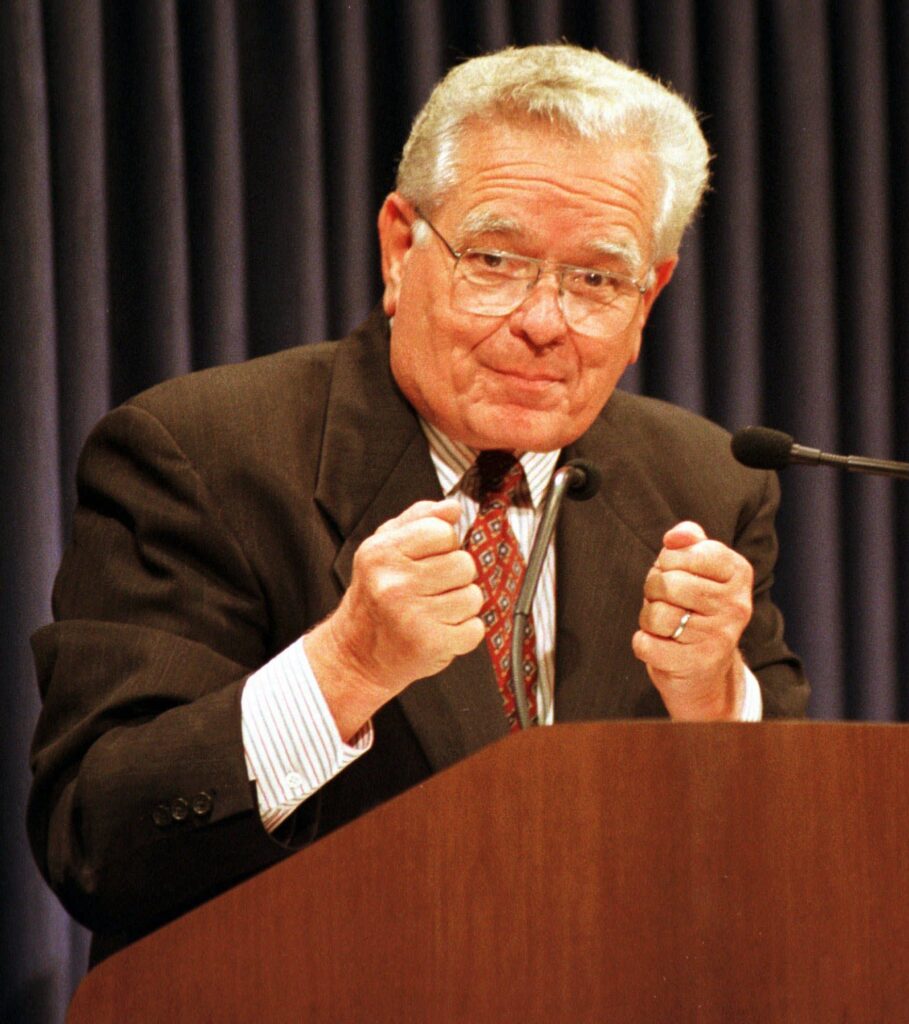Texas has kicked off its mid-decade redistricting effort. What does the process look like?
President Donald Trump asked Gov. Greg Abbott (R-TX) to call the state legislature in for a special session where they could approve new congressional maps that would redraw district lines in favor of Republicans. That began a partisan back-and-forth, with Democratic states such as California and New York threatening to redraw their maps in favor of Democrats. The process of redistricting is complicated and time-consuming, and not every state that has floated mid-decade redistricting is legally allowed to do so. This Washington Examiner series, “Power Lines,” will investigate the process, its local implications, and the hurdles that the mid-decade redistricting effort helmed by national political figures will face in court. Part 1 is an in-depth look at how redistricting works in different states.
President Donald Trump‘s redistricting order to Republicans has sent the nation into a politically charged congressional map-drawing frenzy.
The redistricting process is a critical one in elections. Including one part of a city that holds more Democratic voters or a part of a deep-red rural area could mean enough to flip a House seat.
Trump’s initial call to Texas Republicans was to solidify vulnerable Republican seats in the Lone Star State and ensure they maintain their slim House majority after the 2026 midterm elections. The map laid out by the Texas legislature last week would target five Democratic-held seats. Now, Democrats are ready to counter Republicans with their own redistricting processes in blue states such as California, possibly kicking out Republican incumbents to even the score.
If the Texas mid-decade redistricting effort passes, it could begin a partisan map-drawing process that prioritizes political advantages instead of fairness in a tit-for-tat race.
Here is more information on how states redraw congressional maps across the United States.
What are the steps in different states?
The census, conducted every decade, is used to redraw districts across the country. New districts can be drawn when there is population growth or decline. Each district needs to have a similar number of citizens, which was roughly around 760,000 per district in 2020.
Alaska, Delaware, North Dakota, South Dakota, Vermont, and Wyoming have only one congressional district. Of the 44 other states where redistricting is relevant, 13 have 10 or more congressional representatives.
The exact process from state to state varies widely, but generally, maps are drawn after a census by either a commission or the state legislature. Public hearings may be held to involve citizens in the redistricting process before the maps undergo further review. Maps are often subject to a judicial review process, which can be brought if a person files a lawsuit against the adopted state maps.
People may file lawsuits against maps with problems such as racial gerrymandering, which is the process of drawing maps with race in mind. Racial gerrymandering is illegal, and Louisiana is under ongoing litigation after a group accused the state legislature of such activity.
After all challenges are resolved, state maps are enacted, and new lines are officially drawn.
States with a larger number of congressional districts, such as California (52) and Texas (38), are among the most-talked-about in the redistricting fight. While Texas has appeared to be the main catalyst for redistricting talk as the largest Republican-dominated state, California has fought back with the weight of its Democratic power.
Gov. Gavin Newsom (D-CA), who is jockeying to be a 2028 presidential contender, said California is considering its options and added last week that the state plans to call a November special election to ask voters to approve congressional maps that favor Democrats.
“I’m not going to sit back any longer in the fetal position, a position of weakness, when in fact California can demonstrably advance strength,” Newsom said at an unrelated news conference.
“We’re not here to eliminate the [independent redistricting] commission,” Newsom said. “We’re here to provide a pathway in ’26, ’28, and in 2030 for congressional maps on the basis of a response to the rigging of the system of the president of the United States.”
But the effort, if Newsom does call a special election, is expected to be enormously expensive, and Democrats will have little time to inform voters before November.
California has less power to fight back against Republicans because of its redistricting rules. Most states’ congressional lines are drawn by their state legislatures every 10 years, unlike California and a handful of other states, which use independent redistricting commissions.
These commissions are designed to be nonpartisan. The census and court rulings decide when to redraw districts rather than the partisan process used in Texas. Some states, including California, use citizens instead of politicians on the commissions.
States with independent commissions that draw congressional districts include Michigan, Arizona, and Colorado. There are also “hybrid” states, such as New York and Virginia, which use both the state legislature and a commission to redraw congressional lines.
Maps must meet several different requirements: Districts must have around the same population, properly represent minorities without discrimination, and be contiguous, meaning someone would not cross out of the district during the duration of their travel to any point of it.
Districts must also follow the political boundaries of cities or counties, be compact, preserve “communities of interest” that involve people with common interests, and avoid partisan impacts.
Other states that are being floated for redistricting ahead of 2030, beyond Texas and Ohio, include Florida, New York, Illinois, Missouri, Indiana, and Maryland, among others.
Maryland could push out its sole Republican representative, Rep. Andy Harris (R-MD), with new congressional lines. Missouri and Indiana Republicans could target Reps. Emanuel Cleaver (D-MO) and Frank Mrvan (D-IN), respectively. Florida may follow in Texas’s footsteps to use its state legislature to draw a Republican-dominated map, while Illinois and New York may respond with their own maps to combat Republican efforts.
Presidents don’t usually direct redistricting efforts
Trump urged Republicans in the Texas legislature to redraw the state’s congressional maps on July 15 in hopes of grabbing five House seats out of the effort. The effort is an attempt to avoid a repeat of the 2018 midterm elections during Trump’s first term in office, in which Republicans lost control of the House.
Trump also suggested there are more states he is looking at for mid-decade redistricting.
“There could be some other states we’re going to get another three, or four, or five in addition,” he said. “Texas would be the biggest one. Just a simple redrawing, we pick up five seats.”
The public urging of redrawing a state’s congressional maps by an executive is unprecedented, and experts told the Washington Examiner they have not heard of presidents doing so in the past.
Dan Vicuna, senior policy director of voting and fair representation at Common Cause, said he has not seen an executive pressure states to redistrict before. Common Cause is a nonpartisan, policy-driven organization.
“This is obviously a transparent attempt to protect the party, [ahead] of the midterms,” he continued. “We’ve heard presidents speak out publicly [about] the problem with gerrymandering. Reagan, Barack Obama. But in terms of inserting themselves in a state process using a nonsensical legal argument designed to discriminate against voters of color, the whole thing is new.”
Texas Democratic state Rep. James Talarico, who gained some national name recognition after Joe Rogan interviewed him, said state Democrats “have to emphasize how unusual this is.”
“We’re changing the rules in the middle of the game, right? It’s like coming out of halftime and one team that’s ahead decides they want to change the rules to make it easier to win the game,” he told the Washington Examiner. “Any football fan would recognize that as cheating.”
Gov. Greg Abbott (R-TX) defended the effort in Texas, noting a letter from the Justice Department called for redistricting in areas affected by the Fifth Circuit court ruling in Petteway v. Galveston County, which reshaped implementation of the Voting Rights Act.
“We will maximize the ability of Texans to be able to vote for the candidate of their choice,” Abbott said as the special session began.
Some states could see new maps in play by midterm elections — but not all
The process varies from state to state. It depends on whether they use their state legislature to draw lines or if they use an independent commission.
Every state, except those with only one congressional district, redrew congressional lines after the 2020 census. New congressional districts were also created and redrawn with the reapportionment of representatives, customary every 10 years.
Any active effort to redistrict right now is restricted to Texas and Ohio. Texas is redistricting at Trump’s direction, and Ohio is redrawing its maps because of its unique redistricting system. The Ohio redistricting system approved the Republican-controlled map in 2022, but it expires in 2026 because it lacks Democratic support.
Ohio, in a possible move to make a 12-3 Republican map that Sen. Bernie Moreno (R-OH) has said he favors, is expected to finish it before the 2026 midterm elections.
Texas’s redistricting process is also expected to be short. Talarico told the Washington Examiner last week that the process was expected to take just weeks, well before the 2026 midterm elections.
Other states have not given any clear indication of when they will be done or if they will start mid-decade redistricting at all. Democratic-controlled states such as New York, Illinois, and California appear to be playing a wait-and-see strategy with Texas to see if it goes through with its proposed map.
If Texas does, Illinois should be the first state to try, because it is the only state of the three with no significant roadblock to redistricting. California’s independent commission would normally delay efforts, and New York has every-decade redistricting enshrined in its constitution.
If California voters approve the special election for new maps, it would speed up the process relative to New York.
The Illinois legislature is in control of drawing lines, though it would have a limited number of seats to gain. Only three congressional Republicans represent districts in the state, and all three have double-digit GOP advantages in their areas. Illinois maps are already heavily gerrymandered in favor of Democrats.
Another Republican state, Florida, is also looking to change its congressional maps with the help of its Republican governor and legislature. The red state has already seen a 20-to-8 Republican advantage over Democrats, but Gov. Ron DeSantis (R-FL) said he is looking “very seriously” at asking the legislature to redraw maps.
A redraw of Florida’s maps could kick out Reps. Debbie Wasserman Schultz (D-FL), Jared Moskowitz (D-FL), Lois Frankel (D-FL), Kathy Castor (D-FL), and Darren Soto (D-FL). DeSantis has said the state got a “raw deal” after the 2020 census redistricting, gaining just one congressional seat.
New York and California would have to change state rules to go forward with redistricting, though seats in both states could flip with the proper congressional redrawing. If the states do try to redraw their lines, they would be subject to legal challenges that could extend the process further.
There is also the possibility that court challenges could force any state to redraw congressional lines again if a new map is found to be inadequate or illegal. Court challenges to new maps are common. Around 54 claims were made against congressional maps adopted after the 2020 census.
But the states that could make the most impact, California, Ohio, New York, Florida, and Texas, are expected to be among the states that move the quickest.
“We’re looking at a handful of states that have been in the news,” Vicuna said. Common Cause analyzes maps for evidence of racial and other demographic forms of gerrymandering.
Ultimately, the process could lead to a domino effect, Vicuna said. If Texas enacts new partisan maps, states could speed up their processes to meet the 2026 midterm election deadline. That could possibly erupt into a war of partisanship on the congressional map level.
“They are saying that there is no other purpose to this but partisan warfare, and that’s a very troubling development,” he said.
“It’s going to make it very difficult to have community-centered redistricting in these places, because they’re stating, very clearly, we don’t care about [and] this is all about the food fight between the parties,” he concluded.










